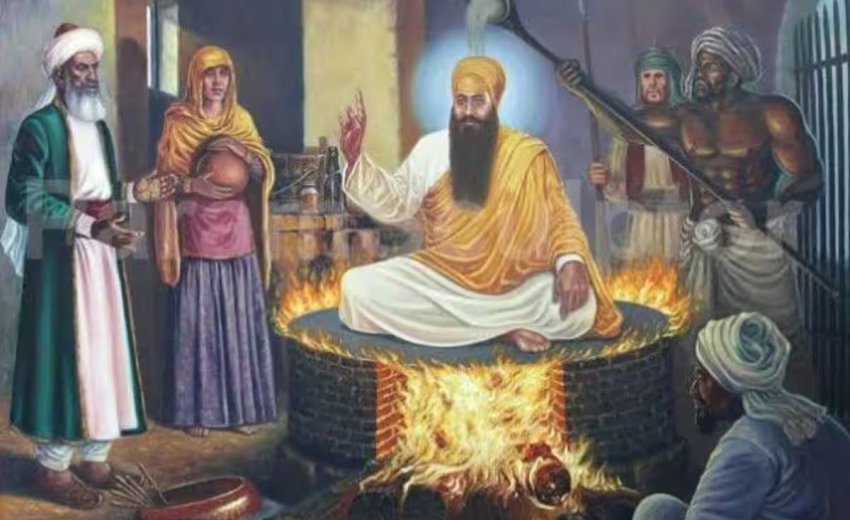In Sikh history, Guru Arjan was the first Sikh martyr.
In Sikhism, martyrdom holds great significance. A martyr, known as a shahid, is someone who decides to give up their life rather than abandon their faith.
In Sikh history, Guru Arjan was the first Sikh martyr. He was the fifth Guru and became one at the age of 18. Guru Arjan is remembered for his commitment to truth. He established the Golden Temple, a central pilgrimage site for Sikhs, in 1601. Additionally, he compiled the sacred Adi Granth, a foundational scripture of Sikhism.
Guru Arjan’s role in Sikhism
Guru Arjan, a talented poet,created 2,312 hymns, earning him the nickname "the ship of sacred poems" even as a young boy. His most famous work, Sukhmani Sahib, also called the Psalm of Peace, is cherished for its wisdom and calming effect. It is believed that Guru Arjan composed Sukhmani Sahib beside the Ramsar Sarovar to comfort a suffering devotee. This devotee, after listening to the composition with reverence, found solace and healing. Hence, Sukhmani Sahib is revered as the "jewel of bliss."
Sukhmani Sahib consists of 24 sections, each containing eight stanzas, imparting spiritual and ethical teachings of the Sikh faith. It begins with an invocation to the Supreme Being, recognized as the eternal Truth — “adi gure, jugadi gure, sat gure and sri gurdeve”.
Namsimran, also known as name meditation, is considered the ultimate path to finding bliss and salvation. To embrace the divine word, one must let go of their ego and embrace humility, which can only be achieved through the grace of the Guru. Being in the company of holy individuals, known as sat-sangat, is a surefire way to discover the ultimate truth. The Almighty, the Creator, is the sole truth governing the entire universe, and we, as His small creations, should submit to His will.
Guru Arjan demonstrated complete surrender to God's will by sacrificing his life to uphold the sanctity of faith. Not only did he preach, but he also set a remarkable example, guiding all humanity to stand up for truth. He is honored as the "Crown of all Martyrs" and the "True King" due to his diverse contributions to society, spirituality, poetry, and his supreme sacrifice for his faith.
A glimpse into his martyrdom
In 1696, the Mughal emperor Jehangir ordered the arrest of Guru Arjan Dev in Lahore Fort. He believed Guru Arjan's growing influence over people threatened Sikhism's influence over them.
Guru Arjan blessed Jehangir's rebellious son Khusrau, which angered the Mughal king, leading to his immediate execution order. He underwent excruciating torture: he was made to sit on a burning plate while hot sand was poured on him, followed by immersion in the river and five days of continuous torture until his death. In summary, he was burnt alive for supporting the emperor's rebellious son.
Commemorating Guru Arjan with Langars and Pilgrimage
Every year on the day of Guru Arjan’s martyrdom, people around the world come together to organize Langars, which are Sikh community feeding events. They also hold religious events and readings of the Guru Granth Sahib. Additionally, a group of Sikh pilgrims, known as the Jatha, visit the Gurdwara of Dehra Sahib in Lahore, Pakistan, as part of their annual tradition.
*Based on an article by Kulbir Kaur, published in Deccan Chronicle on 11th July 2013
